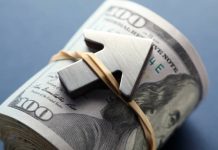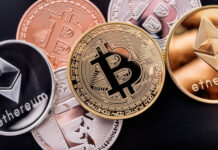Markets
Stock markets ended last week with a bang. Europe added 1.83% while gains on Wall Street went as high as 3.33% (Nasdaq) after an already strong performance on Thursday. The S&P500 (+2.47%) jumped closer to a first resistance of 4195 (38.2% recovery of the 2022 decline). A string of US economic data including easing PCE inflation and the strongest rise in inflation-adjusted consumer spending (cf. infra) fulfilled investors with hope the Fed may not need to act as aggressively as feared.
It explains why core bonds didn’t really suffer from the risk-on mood. US Treasuries did underperform German Bunds though. Changes varied from -1.8 bps (30y) to +1.1 bps (3y). The 10y yield (-1 bp) balanced on the 2.71% support area. German yields gave up 0.3 bps (2y) to 3.5 bps (30y).
With the likes of oil (Brent closed near $120/b) enjoying a good run, commodity currencies were Friday’s star performers. AUD, NZD and NOK added between 0.5-1% against major peers. The dollar correction continued but moderated with the trade-weighted index dipping a few ticks to 101.67. EUR/USD tested intermediate resistance of 1.0758 before closing at 1.0735 eventually. USD/JPY stabilized around its 50-day moving average in the high 126 zone. EUR/GBP calmed down after some wild PMI-driven swings earlier in the week. The currency pair flipflopped around the 0.85 big figure.
Asian-Pacific sentiment this morning is as buoyant as it was in the US last Friday, helped higher by China easing some of the virus restrictions in Shanghai and Beijing. Japan together with Hong Kong outperforms. Chinese bourses rise modestly but the yuan is having an excellent run. USD/CNY drops from 6.70 to 6.65 with the USD still trading on the back foot too. EUR/USD is having another go at 1.0758. Bond futures trade lower.
US cash markets are closed in observance of Memorial Day and keep the focus on Europe for today as a result. Catching the eye on the eco calendar is the EC’s economic confidence indicator, the start of a two-day special meeting in Brussels at which EU leaders will discuss defense, inflation, energy and food security and May inflation in Spain and Germany. The European wide figure is due tomorrow. An early regional reading in North Rine Westphalia this morning suggests an upward surprise. Such a scenario could reignite speculation on a 50 bps ECB rate hike as proposed by the likes of Knot and Holzmann and keep European yields protected at the downside. For EUR/USD, next reference is 1.0806 but this would need confirmation in full liquidity circumstances.
News Headlines
CNB member Holub on Sunday labeled a 75 bps hike at the 22 June policy meeting as more or less discounted by money markets realistic. This is the last meeting before new appointed governor Michl becomes head of the central bank. Holub assesses that inflation will have to be brought back under control by cooling demand, which involves both a tightening of fiscal and monetary policy. On Friday, Governor Nidetzky suggested that a June rate hike might be enough to bring inflation back to the 2% target at the end of next year, but didn’t give any hints on the magnitude of the hike. Earlier last week, Michl repeated his view that rate hikes are only appropriate in case demand driven inflation. As he assesses that inflation is currently mainly cost driven, he repeated his view that rates can be kept stable after becoming head of the CNB in July. However, he left the door open for the board to react accordingly in case of future domestic price inflation. The Czech currency end last week found a new short term equilibrium in the EUR/CZK 24.70 area.












